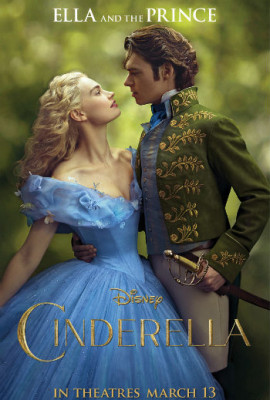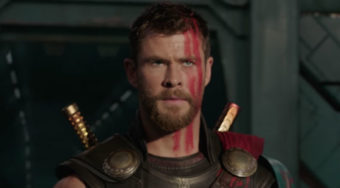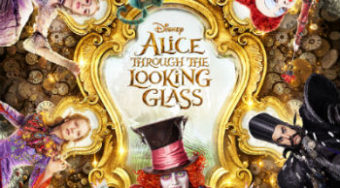Film Reviews

Cinderella
Genre: Fantasy, Family
Director: Kenneth Branagh
Cast: Cate Blanchett, Lily James, Richard Madden, Stellan Skarsgard, Holliday Grainger, Sophie McShera, Derek Jacobi, Helena Bonham-Carter
MPAA-Rating: PG
Release Date: March 13th, 2015
Kenneth Branagh’s Cinderella is an extraordinary film. The director, buy more about famous for bringing so many Shakespearean plays to the big screen, here brings an undeniable charm and elegance to the proceedings— making this familiar story come to life in an unfamiliar way. Lily James (Downton Abbey) stars as the title character but it’s really the gorgeous visual choices and production designs that make this Disney fairy hard to forget.
When the story opens, Ella (not yet nicknamed Cinderella) is introduced as a girl who sees the world “not for what it is but for what it could be.” She’s living a beautiful life with two loving parents but when tragedy strikes, her mother leaves her with simple but strong words of advice: “Have courage and be kind.” It’s a message that Ella will need when her father remarries and she’s left living in an attic under the watchful eye of her wicked stepmother (a wonderfully scornful Cate Blanchett) and her obnoxious stepsisters (Sophie McShera and Holliday Grainger).
The story of the mistreated girl and her budding romance with a young prince is well-known and Branagh has maintained much of its structure (this is much more traditional than the 2014 hit Maleficent) while adding a unique but subtle spin on it.
The screenplay by Chris Weitz (About a Boy) is straightforward but features some spot-on lines of dialogue that meticulously define the characters. In describing the stepmother, the narrator (Helena Bonham Carter, who plays the fairy godmother), notes that “She too had known grief but she wore it wonderfully well.”
In establishing the relationship between the Prince (a well-chosen Richard Madden) and his father the King (Derek Jacobi), Weitz establishes their father-son bond in subtle but meaningful ways. “Punctuality is the politeness of princes,” the King advises his son but later on, in a lighter moment, he jokes to the Prince that Cinderella is “the forgetful one who loses her shoe.” There are only a few scenes between the duo but lines like these lay the foundation for their bond.
What Branagh shows here is that one can take a well-known fairy tale and maintain its structure while making something so utterly charming and delightful that it’s hard to resist its appeal. The actors and the script work here but the real stars here might be the production designers and the costume designers who create an intricately beautiful world for this tale. The scenes soar stylistically as if they are straight out of a fairy tale book and viewers will be entranced in scene after scene (the scene where mice come to life and a pumpkin becomes transformed truly stands out as a remarkable visual achievement) where the director’s stunning vision becomes reality.
Disney has not forgotten how to make unforgettable fairy tales unravel on the big screen and Cinderella proves that. The visuals capture the magic and the spirit of the story without overwhelming it.
Branagh may have seemed an odd choice to helm this project. Amongst other things, he is well known for bringing Shakespearean plays to the film screen. From Henry V (which earned him Oscar nods for best actor and for best director) to Hamlet to Much ado about Nothing,there’s a great prestige present in much of his filmography (the same can be said for Thor, Branagh’s venture into the Marvel universe).
During a recent interview, the director addressed the differences between bringing well-known Shakespearean plays to the big screen and bringing a well-known fairy tale to it and he noted that there’s not that much of a difference as one would think. He proves that in Cinderella, a movie that shows that his distinguished but straightforward vision was exactly what was needed to make this adaptation thrive.
Review by: John Hanlon












